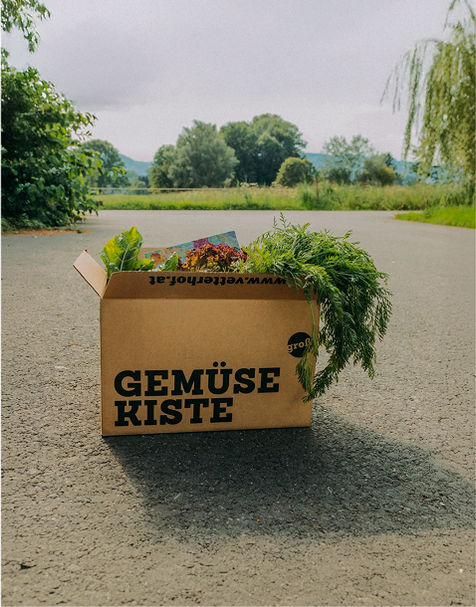Brothers Simon and Raphael Vetter are continuing their family’s 40+ year commitment to organic vegetable farming at Vetterhof, in Western Austria. Blending tradition and innovation, they’re using tech to build a hyperlocal market that puts biodiversity and creativity first.
Their story
A Family Affair
In Lustenau, Austria, near the borders of Switzerland and Germany, Vetterhof thrives in the Rhine Valley’s fertile alluvial soils. Small-scale vegetable farming has been a tradition here for generations. Simon Vetterhof’s grandparents were among the first to adopt organic practices 40 years ago and his parents fully converted the 20-hectare farm to certified organic in the late 1980s. In 2016, Simon and his brother Raphael took over, continuing their family’s legacy of innovation and commitment to sustainable agriculture.
In addition to being certified organic, Vetterhof implemented regenerative practices such as strip farming, no-till systems, and advanced composting methods that have helped them reduce costs while maintaining high-quality yields. Three years ago, they decided to phase out animal husbandry. As Simon explains, “This decision was not made out of criticism toward animal farming, but rather a belief that land capable of producing plant-based crops should be utilized as such even in the Alpine region.”
Using Tech To Build Hyperlocal Markets
Vetterhof takes a hyperlocal approach to farming. Every week, they deliver veggie boxes to 700–800 households. They work closely with restaurants and are a fixture at the local farmers’ market.”
To further support the growth of hyperlocal, regenerative markets, Simon and his team turned to technology. They developed MARTAS, a software solution that allows them and other farmers to manage their subscription box model directly. Now, they are working on a new software solution for farmers supplying and partnering with the gastronomy sector to aid in distribution and streamline operations. As Simon sees it, “These solutions play a critical role and need to be developed from practical farming experience.”
Vetterhof is consistently experimenting with technology to see how it can increase the adoption of regenerative practices. “Autonomous weed control robots, AI-driven biodiversity monitoring are the kinds of technologies that could make regenerative farming more accessible at scale.” says Simon.
An Ecosystem for Growth
Looking ahead, Simon envisions Vetterhof as more than just a farm. He sees it as a hub for knowledge sharing and a center for cross-disciplinary collaboration. “Like a greenhouse,” he says, “we see the farm as an enabling environment not just for plants, but also for people to grow.”
One example is the Dirt Society, a collective that brings together individuals from agriculture, food, and the arts to explore new ways of working together. “In ecology, transition zones foster greater diversity.” Simon explains. “Inspired by this, we intentionally create spaces where diverse individuals can engage with and challenge our ideas.”
Vetterhof is now looking to forge partnerships with other farms in the region to leverage economies of scale. “Our vision is to build an ecosystem that thrives on innovation, sustainability, and collaboration. By working together, we reduce costs, come up with new ideas, and support the broader transition to regenerative farming.”

Farm facts
Farm located in
Austria












